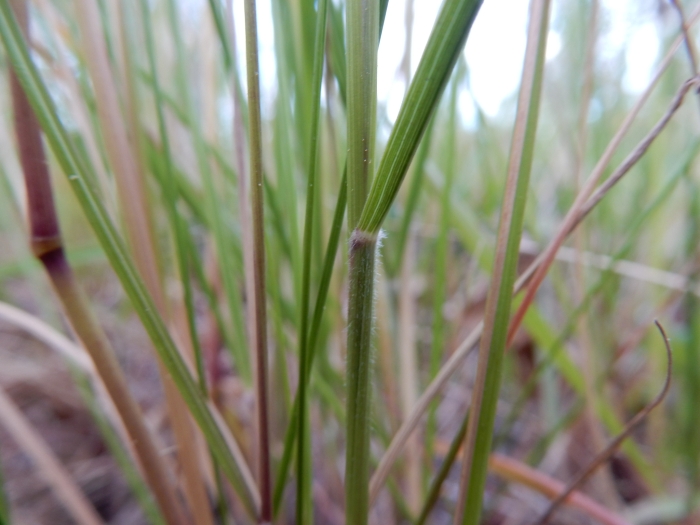Pinegrass
(Calamagrostis rubescens)
Pinegrass (Calamagrostis rubescens)
/
/

Matt Lavin
CC BY 4.0
Image By:
Matt Lavin
Recorded By:
Copyright:
CC BY 4.0
Copyright Notice:
Photo by: Matt Lavin | License Type: CC BY 4.0 | License URL: http://creativecommons.org/licenses/by/4.0/ | Rights Holder: Matt Lavin | Publisher: iNaturalist | Date Created: 2016-07-05T20:04:10-07:00 |
























Estimated Native Range
Summary
Calamagrostis rubescens, commonly known as Pinegrass, is a perennial bunchgrass native to the understory of coniferous forests and montane regions in western North America, ranging from British Columbia to Manitoba and extending south to California and Colorado. It typically grows erect to heights between 24 inches and one meter, with a clumping habit that forms dense tufts. The inflorescence is a panicle that can appear as a dense bunch or an open array of spikelets, each about half a centimeter long, with a bent or twisted awn. Pinegrass flowers infrequently, but when it does, it blooms from late June to August, producing subtle flowers that may go unnoticed.
Pinegrass is valued for its ability to thrive in the understory of dense forests, contributing to soil stabilization and providing forage for wildlife. It is used in restoration projects, especially in forested areas, and can be a suitable ground cover in shaded garden settings. This grass prefers partial to full shade, moist but well-drained soils, and can tolerate a range of soil types. While it is low-maintenance, it may require additional water during dry periods. Pinegrass is not known for significant pest or disease problems, but it can be outcompeted by more aggressive species if not managed properly. It is not typically associated with aggressive roots or invasiveness.CC BY-SA 4.0
Pinegrass is valued for its ability to thrive in the understory of dense forests, contributing to soil stabilization and providing forage for wildlife. It is used in restoration projects, especially in forested areas, and can be a suitable ground cover in shaded garden settings. This grass prefers partial to full shade, moist but well-drained soils, and can tolerate a range of soil types. While it is low-maintenance, it may require additional water during dry periods. Pinegrass is not known for significant pest or disease problems, but it can be outcompeted by more aggressive species if not managed properly. It is not typically associated with aggressive roots or invasiveness.CC BY-SA 4.0
Plant Description
- Plant Type: Grass
- Height: 1.5-3 feet
- Width: 1-2 feet
- Growth Rate: Slow
- Flower Color: N/A
- Flowering Season: Spring, Summer
- Leaf Retention: Deciduous
Growth Requirements
- Sun: Part Shade, Full Shade
- Water: Medium
- Drainage: Medium, Slow
Common Uses
Bird Garden, Low Maintenance
Natural Habitat
Native to the understory of coniferous forests and montane regions in western North America
Other Names
Common Names: Pine Reed Grass
Scientific Names: , Calamagrostis rubescens, Calamagrostis aleutica var. angusta, Calamagrostis angusta, Calamagrostis cusickii, Calamagrostis fasciculata, Calamagrostis luxurians, Calamagrostis rubescens var. luxurians, Calamagrostis subflexuosa, Calamagrostis suksdorfii
GBIF Accepted Name: